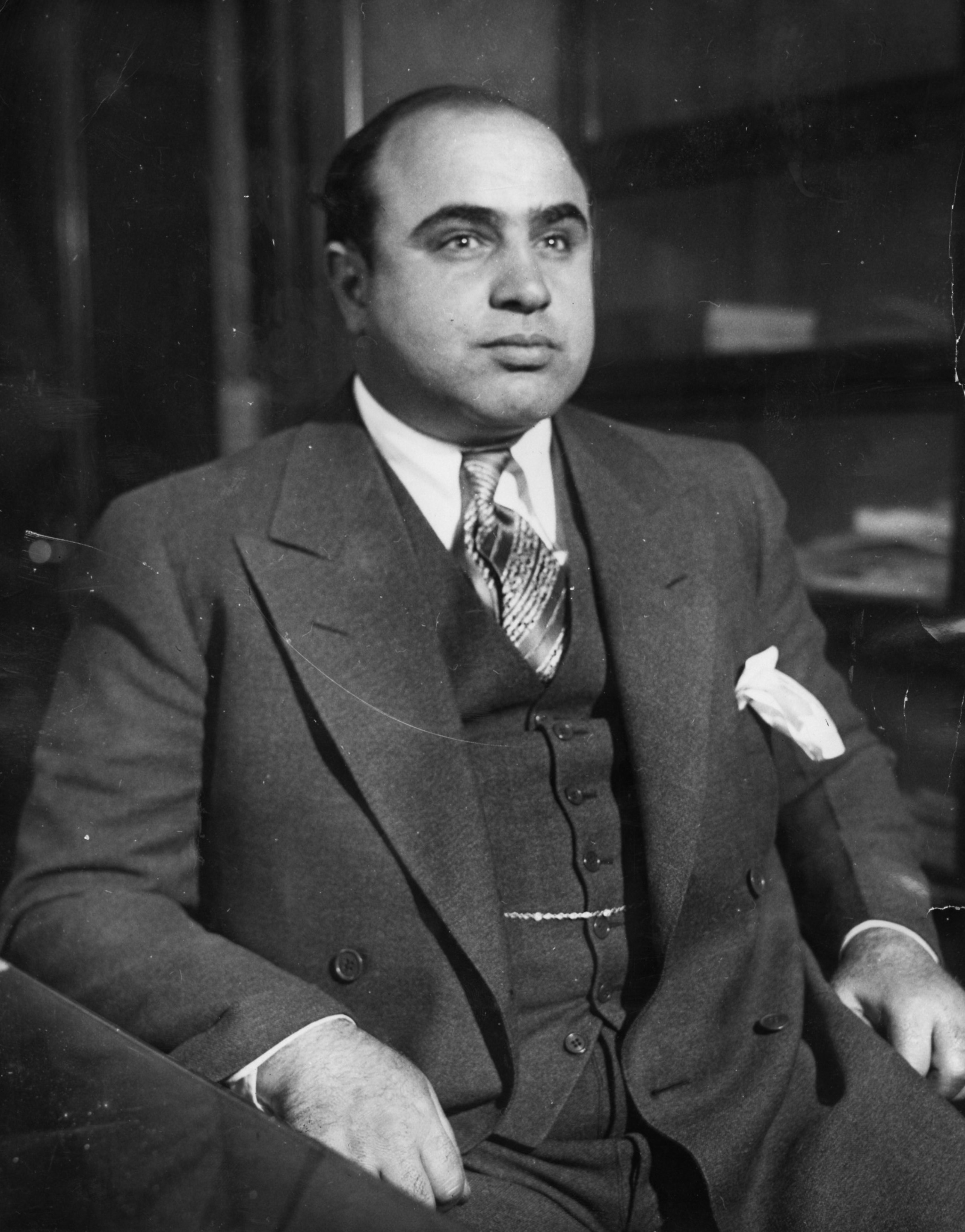On Saturday October 17th, 1931, America’s most notorious gangster, 33-year-old Al Capone, was sentenced to 11 years in prison, signalling the downfall of one of the 20th century’s most powerful criminal empires.
Renowned for his involvement in prostitution, gambling and smuggling alcohol during Prohibition, Chicago’s feared crime boss was finally jailed for tax evasion – the only crime he was ever locked up for. It didn’t matter what charge brought him down, as by then he was already showing the early signs of dementia resulting from untreated syphilis, a disease which would put him in his coffin just 16 years later.
 Born in 1899 to poor Italian immigrants in Brooklyn, New York, Alphonse Gabriel Capone was troublesome from an early age. At 14 he was expelled from school, although by then he rarely attended anyway, preferring to spend his time hanging around Brooklyn’s gang members. After he was sliced across the cheek during a fight, he was nicknamed “Scarface”, a name which he hated and which would earn harsh reprisals for anyone who used it within his hearing.
Born in 1899 to poor Italian immigrants in Brooklyn, New York, Alphonse Gabriel Capone was troublesome from an early age. At 14 he was expelled from school, although by then he rarely attended anyway, preferring to spend his time hanging around Brooklyn’s gang members. After he was sliced across the cheek during a fight, he was nicknamed “Scarface”, a name which he hated and which would earn harsh reprisals for anyone who used it within his hearing.
By 1920 he had moved to Chicago, where he was soon helping to run a string of illegal enterprises for crime boss Johnny Torrio. After an attempt on his life in 1925, Torrio retired, putting Capone in charge of the organisation in recognition of his growing reputation as a brutal and cunning operator.
America introduced Prohibition in 1920, outlawing the brewing, distribution and sale of alcohol amid growing fears of its immoral effects on society. It was a gift to America’s mobsters, who recognised an opportunity to make big money from a commodity which was easy to produce or smuggle across borders, and one which was in great demand. Bootleggers and gangsters alike were soon making big money, and in Chicago it was Capone who controlled the thriving illegal trade and raked in massive profits.
Somehow he always seemed one step ahead of the authorities, probably due to a network of paid informants in the police and other crime agencies. He was also surprisingly popular among much of Chicago’s general population, setting up soup kitchens during the Depression and establishing a scheme to distribute free milk for all schoolchildren.
But Capone’s reign was one of terror. He is thought to have killed at least four people personally and ordered the deaths of dozens more, wiping out competitors through a series of gangland battles and slayings. Most infamous of these was the 1929 “Valentine’s Day Massacre”, when Capone’s men gunned down seven rivals. It raised Capone’s notoriety to national levels and by 1930 he was top of the FBI’s “Most Wanted” list.
Several attempts were made to arrest and prosecute him, but case after case collapsed as he bribed city officials, intimidated witnesses or went into hiding while his lawyers and enforcers “smoothed things out”. Eventually it was realised the only way to bring Capone to account would be using outsiders free from the bribery and corruption infesting Chicago’s criminal justice system.
That job fell to ambitious federal agent Elliot Ness, who led a team of officers dubbed “The Untouchables”, because they couldn’t be bribed or blackmailed. They routinely disrupted and broke up Capone’s illegal enterprises, but were repeatedly frustrated in their efforts to link him directly to any criminal activity. Eventually it was a mild-mannered accountant on Ness’s team who realised there was strong evidence to prosecute Capone for tax evasion – a crime which carried lengthy prison terms.
So it was that 88 years ago today, Capone was sentenced to 11 years and sent initially to the US Penitentiary in Atlanta. Allegations soon emerged that he was still running his empire from within its walls, manipulating the system and receiving cushy treatment by bribing guards. That brought about his transfer to the maximum security prison on Alcatraz Island, in California’s San Francisco Bay, from where even Capone’s deadly influence couldn’t be felt.
In 1933 Prohibition was repealed and Capone’s gang, deprived of their leader and main source of income, quickly fell apart amid a series of destructive power struggles. By now Capone was showing clear signs of increasing dementia, resulting from syphilis. While running Chicago’s lucrative prostitution racket he was known to take advantage of women who caught his eye, and it was probably there that he caught the disease. Without proper treatment it developed into tertiary syphilis, infecting his central nervous system and attacking his brain stem.
Capone became almost a comical character in Alcatraz, walking around the prison wearing a vacant grin and with grand delusions of his own self-importance long after any real power had dissolved away. Other inmates who had once lived in fear of Capone and his power now fed his delusions by playing up to them, treating him with a false and exaggerated reverence which made him almost a living joke.
In 1939 he was released for good behaviour after serving just over seven years, almost all of the last one inside the prison hospital. With no power base left in Chicago, he was taken to his home in Palm Island, Florida. Plagued with health problems for the rest of his life, Capone died there in 1947 at the age of just 48.
